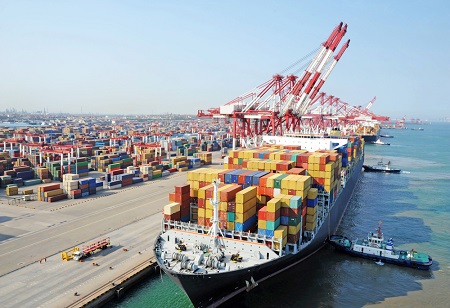The month of June 2020 saw a trade surplus for the first time in more than a decade, amounting to $0.79 billion. Although a reduction in domestic demand because of the pandemic leading to reduced import was one of the factors behind it, the export scenario has not been as gloomy as it could have been which is why the trade deficit has reduced. According to an estimate by the United Nations Conference on Trade and Development (UNCTAD), the areas which have been affected the most are textiles and apparel, office machinery, automotive sectors, energy sectors, chemicals, machinery, and precision instruments segment.
However, export of non-petroleum and non-gems and jewelry underwent a marginal increase by 3.4 percent in July, increasing to $20.37 billion after a reduction of 3.51 percent in June. India has registered an increase in export of drugs & pharmaceuticals by 19.5 percent, engineering goods by 8.5 percent, rice by 48 percent, iron ore by 39.6 percent, and cotton yarn by 7.4 percent, amongst others. Commerce and Industry Minister Piyush Goyal said last week that India is discussing with the US, EU, Russia and the UK to come up with a Free Trade Agreement (FTA), making necessary changes to the old trade pacts to bring in more transparency and accountability.
Aditi Nayar, Principal Economist at ICRA says, “The rare trade surplus seen in June vanished with some recovery in merchandise imports in July, which stamped out the further improvement in merchandise exports. This trend is likely to strengthen in the coming months, as demand for non-oil, non-gold imports start to normalize, gold imports gather steam around the festive months, and crude oil demand and prices stabilize at a moderate level.”
Beyond Self-reliance
Considering this fact, the breaking even of the trade balance or the diminishing trade deficit or
even managing to accomplish a trade surplus for short time period is not much to rejoice about.
The way forward must be a visionary one which not only emphasizes the need for self-reliance but also factors in the importance of boosting export. This is because the domestic demand per se cannot catapult India to the position of manufacturing leader of global competence. Hence, the prime minister of India has also exhorted industry leaders to ‘Make in India for the World’ which he said should be the new motto.
The plunging import of machine tools, machinery, and transport equipment signifies a lack of investment influx into the domestic market. The worsening trade relations of China with countries around the globe have proved to be a blessing in disguise for India as China which has maintained hegemony in the manufacturing sector is facing embargoes. Several manufacturers are looking to shift their operations out of China and India can be an ideal destination for them given that necessary steps are taken in this direction by the government.
In line with this goal, India is planning to provide incentives to manufacturers of high efficiency solar photovoltaic modules and battery storage. The government is contemplating the roll out of a package of Rs 18,000 crore for battery storage manufacturing and also plans to dole out Rs 4500 crore for solar PV manufacturers. Another area where India is looking to meet not just its own demand but of the world as well is sugar. Export of sugar is expected to increase 50 percent to a record of more than 5.7 million tonnes.
Building Export Capabilities
Next in line is the chemical industry wherein India can become a preferred provider of raw materials to the US, Europe, and Japan for making of chemical products. Achieving this feat might not be as herculean as it seems as chemical industry is one of the India’s oldest industries and the country is one of the leaders in this segment. One of the numerous testimonies to India’s prowess in this segment is that 16 percent of the world’s production of dyes and dye intermediates is done by India, as per Invest India.
Last but not the least is automotive component manufacturing. Auto component manufacturers are increasingly looking to bulk up their exports and reduce import with an aim of reducing their vulnerability to volatile currency. Industry leaders in this sector believe that export will increase rapidly in the next five years; however, the component makers will keep importing high volume, low value parts owing to the higher cost of logistics and power.
While the government has been taking measures towards the improvement of ease of doing business, the much needed step was to measure and evaluate the improvement. With Niti Aayog’s Export Preparedness Index (EPI) 2020, the country will now be able to assess its export preparedness in a better way by understanding how regional capabilities are being built up. With initiatives like these, the government will be able to see a clear picture of how the national policies are percolating through to the regional level.
